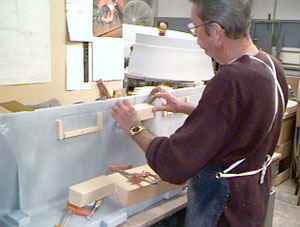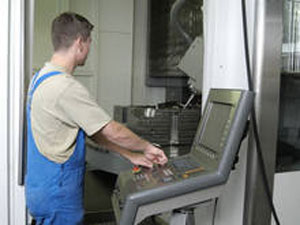Pattern Maker
Tasks & duties

Pattern makers may do some or all of the following:
-
read, design and interpret pattern drawings
-
work out the sections needed to make up the pattern
-
select material for the pattern such as wood, resin and fibreglass, or metal for high production patterns
-
may build plugs (plastic replicas) and then make patterns from them
-
mark the materials for cutting and machining
-
cut and shape the parts
-
screw, glue or clamp the castings together
-
check measurements
-
trim, smooth and polish the surfaces
-
paint or lacquer the pattern
-
repair worn or broken patterns
-
may make replica models for display purposes
Skills & knowledge

Pattern makers need to have:
-
knowledge of different materials such as metals, woods, clays, plastics and resins
-
knowledge of how to read technical drawings
-
the ability to visualise products before they are made
-
knowledge of how to use and care for equipment
-
good technical and engineering skills
-
maths skills for making calculations
-
organisational skills in order to meet deadlines
-
listening and communication skills
Entry requirements
To become a pattern maker you need to complete an apprenticeship and gain a National Certificate in Metal Casting Technology. For further information about apprenticeships contact Tools4Work.
Secondary education
To become a pattern making apprentice or trainee, a minimum of School Certificate or NCEA equivalent technical drawing, maths and workshop technology is needed.
Tertiary education
Some employers prefer that you have done a pre-apprenticeship course, but this is not compulsory.
Training on the job
Skills are gained on the job.
Useful experience
Useful experience for pattern makers includes:
-
toolmaking work
-
foundry work
-
technical drawing or any type of creative work
-
work experience in an industrial workshop
-
work with plastics and wood
Related courses
Metal Casting and Pattern Making
For more information, please refer to Career Services.
Document Actions
